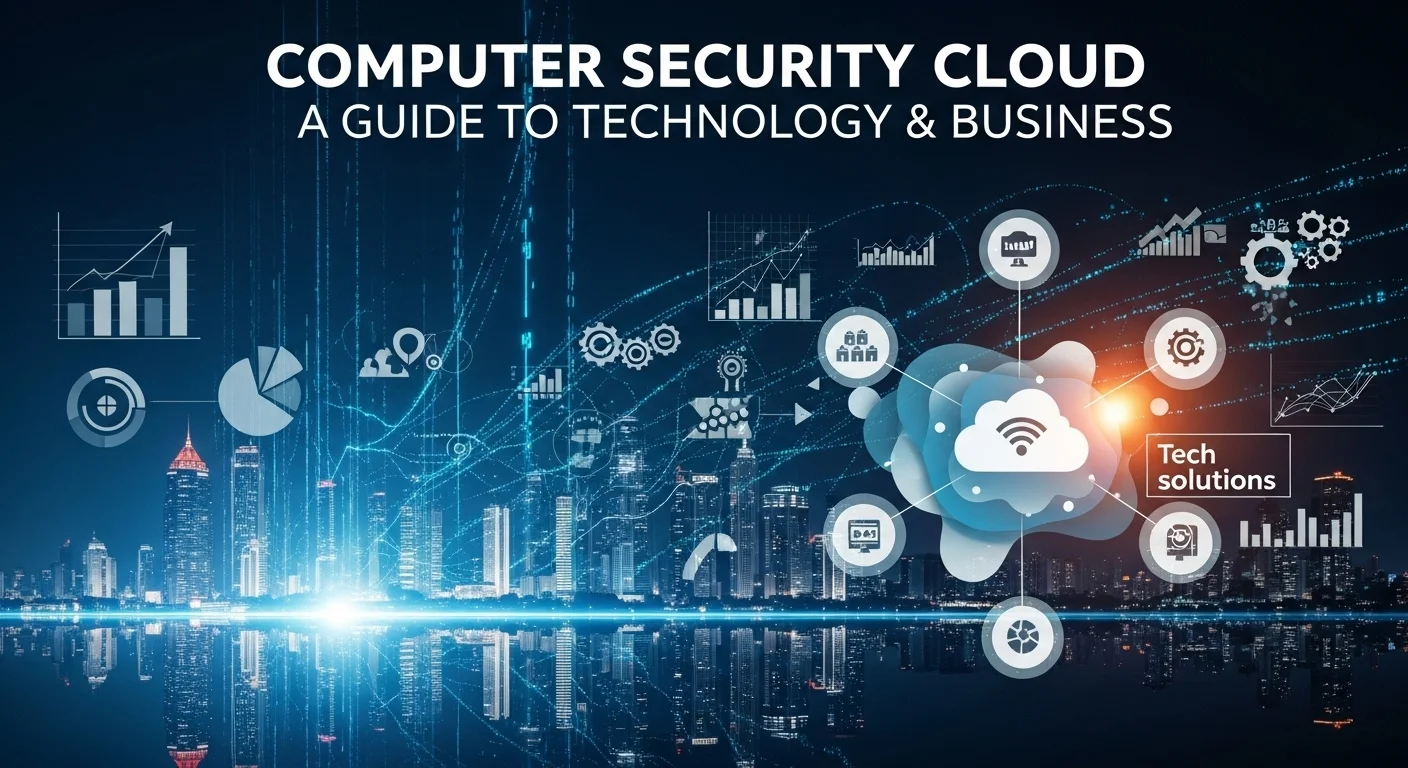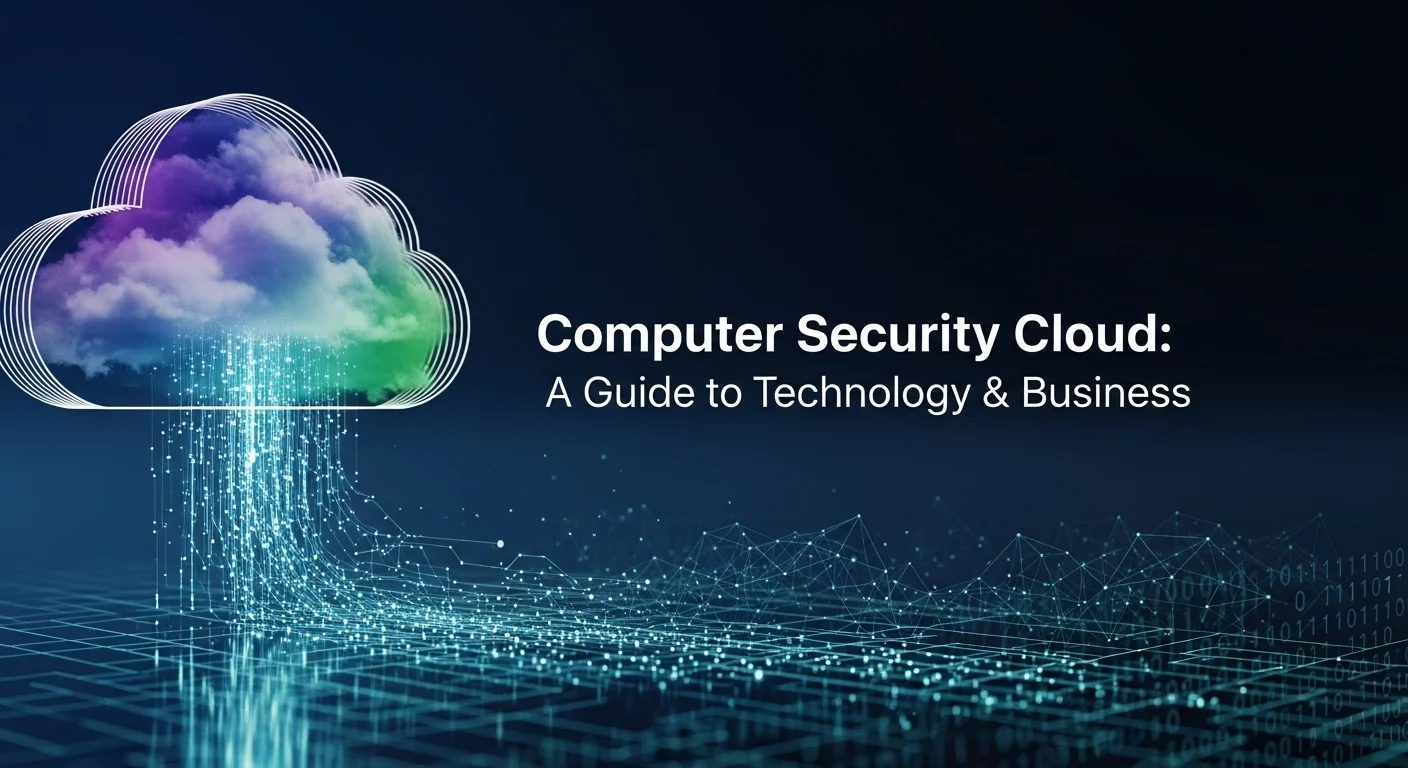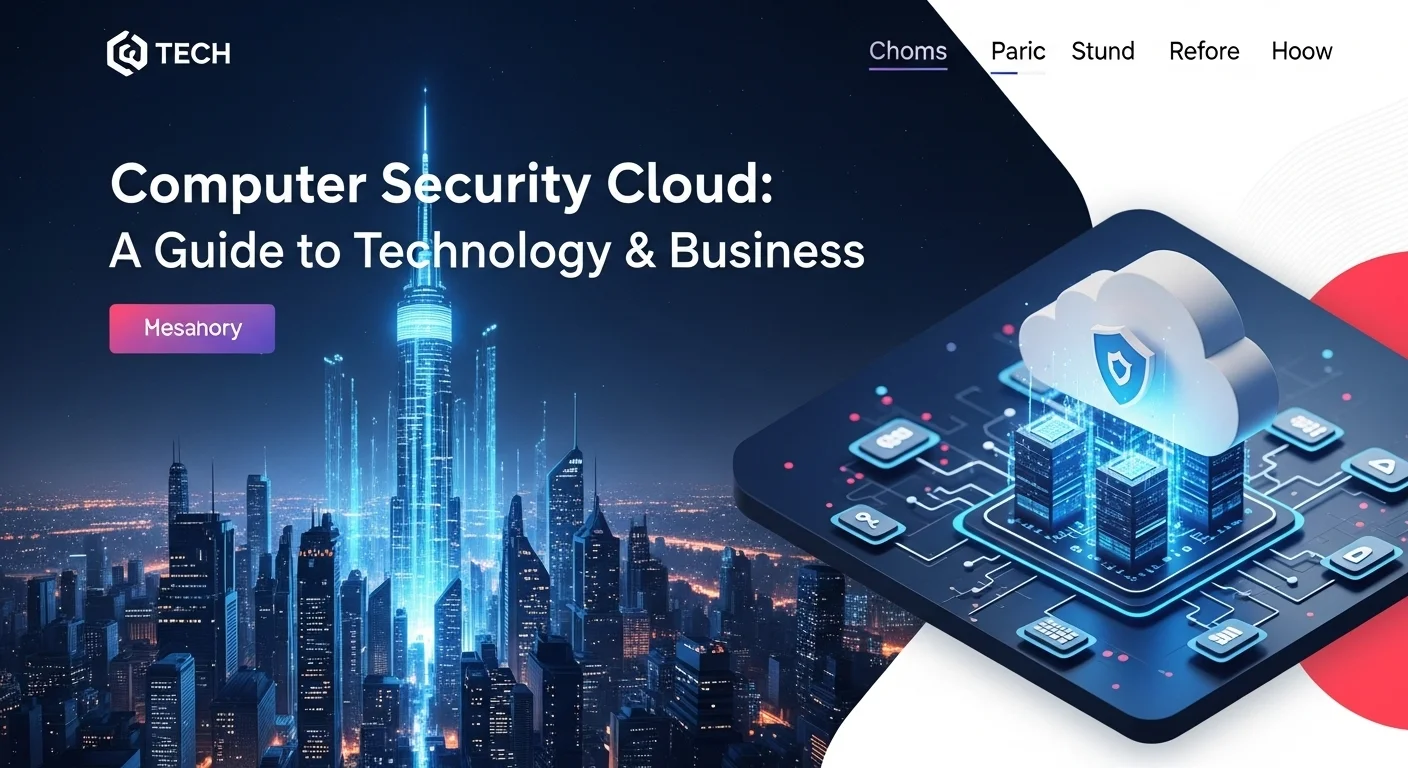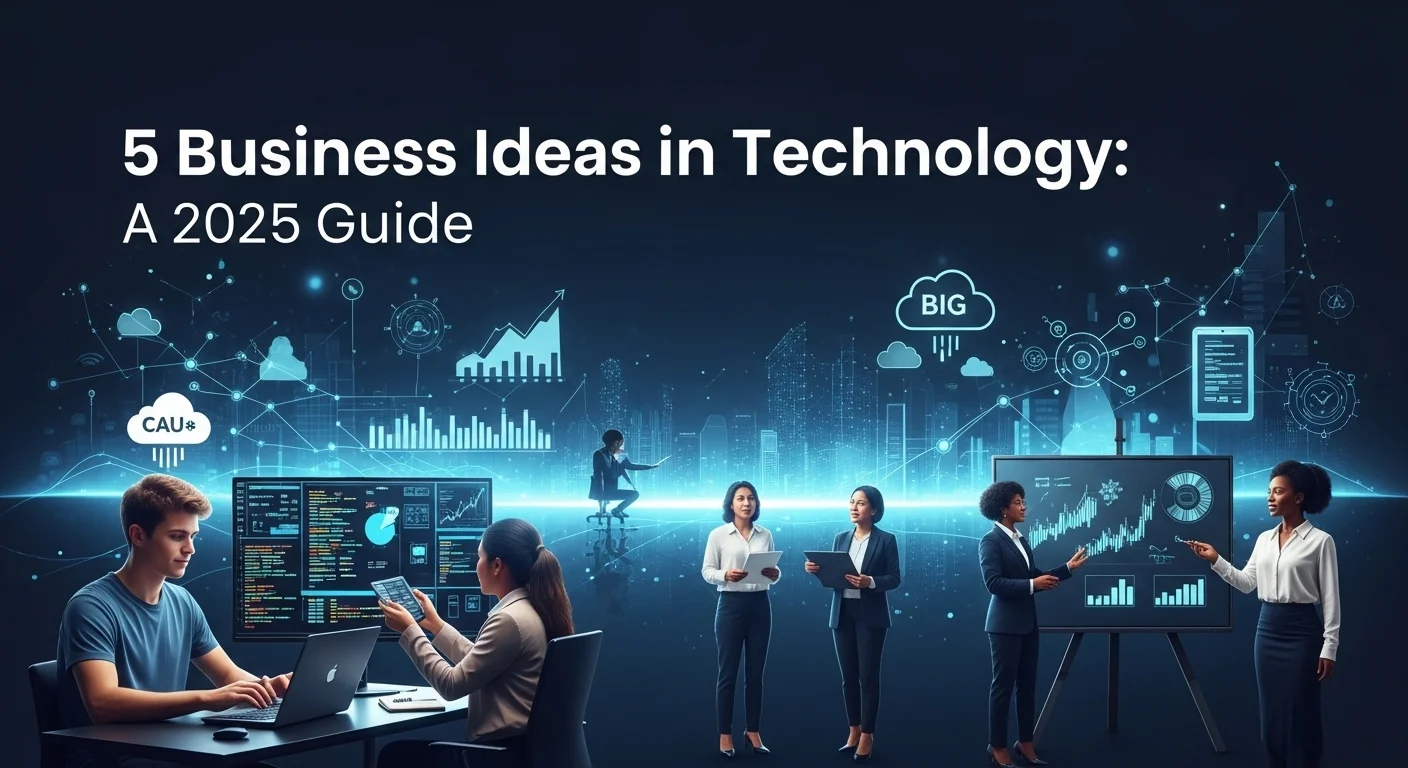Cloud Security Demystified: A Real-World Guide for Your Business

Executive Summary
I’ve spent years helping businesses make the leap to the cloud, and I see the same mix of excitement and anxiety every time. The potential is huge, but so are the questions about security. Is our data really safe out there? This article is my attempt to cut through the jargon and give you a straight-talking guide to cloud security. We'll cover what it is, why it's different from what you're used to, and how you can build a strategy that protects your company without slowing you down. Think of this as your roadmap to navigating the cloud with confidence.
Table of Contents
Table of Contents
- What is Cloud Security and Why Is It So Important?
- The Big Shift from Traditional IT Security
- The Shared Responsibility Model: The Most Crucial Concept
- The Key Pillars of Modern Cloud Security
- A Practical Guide to Cloud Security Solutions
- Actionable Tips & Strategies for a Better Cloud Experience
What is Cloud Security and Why Is It So Important?
So, what exactly is 'cloud security'? In simple terms, it's the collection of all the rules, tools, and practices we use to protect the data, apps, and infrastructure we host in a cloud environment—like AWS, Azure, or Google Cloud. As more of our business and personal lives move to the cloud for everything from storing photos to running complex applications, securing it has become absolutely essential. The cloud is amazing because it's flexible and accessible from anywhere, but those same features create unique security challenges that are very different from the old days of having a server locked in a closet. The main goal here is to keep our data private, accurate, and always available, all while playing by the rules of data regulations.
Honestly, I can't overstate how important this is. In today's world, your data is one of your most precious assets. A security breach isn't just a technical headache; it can be a financial and reputational disaster. I've seen firsthand how a breach can erode customer trust that took years to build. Investing in solid cloud security isn't just an expense; it's a core business strategy. It’s what allows you to safely use amazing cloud-powered technologies like AI and big data analytics. It gives you the confidence to grow your business, knowing your security can scale right along with it. Without it, the agility and cost savings that make the cloud so attractive are completely undermined by risks like data theft and service outages.
The Big Shift from Traditional IT Security
To really get why cloud security is different, it helps to look back at traditional IT. In a classic setup, your company owned the hardware, and security was all about building a fortress. You had a strong perimeter with firewalls and physical security to keep bad actors out. The lines were clear. The cloud completely dissolves that perimeter. Your data isn't in one place anymore; it's spread across massive data centers, reachable from any internet connection. This creates a much bigger, more complex surface for potential attacks. In my experience, the biggest shift is mental: you have to stop thinking about protecting the 'network' and start thinking about protecting the 'data' itself, no matter where it is. This is what we mean by a data-centric approach. It demands multiple layers of defense—strong identity controls, constant monitoring, and encryption everywhere.
The Shared Responsibility Model: The Most Crucial Concept
If you remember one thing from this article, make it this: the Shared Responsibility Model. This is the single most important concept to grasp, and honestly, it's where I see most security gaps appear. It’s a framework that clearly defines what the cloud provider (like AWS) is responsible for and what you, the customer, are responsible for. It’s a partnership. The provider is responsible for the 'security *of* the cloud'—the physical data centers, the servers, the core network. You are responsible for 'security *in* the cloud'—your data, your applications, how you configure access, and your network settings. How this responsibility is split depends on the service you use:
- Infrastructure as a Service (IaaS): You have the most control and the most responsibility. You manage the operating system, applications, and data.
- Platform as a Service (PaaS): The provider manages the underlying platform, and you just worry about your application and data security.
- Software as a Service (SaaS): The provider manages almost everything. Your job is mainly to manage users and secure how your data is used within the app.
A huge number of cloud security failures happen because of simple customer misconfigurations. It's not the provider's fault; it's a misunderstanding of this model. Knowing where your responsibility begins and ends is fundamental.
The Key Pillars of Modern Cloud Security
A strong cloud security strategy stands on several key pillars that work together. Think of them as the foundation of your secure cloud house.
1. Identity and Access Management (IAM): This is about controlling who gets access to what. The guiding rule here is the 'principle of least privilege'—only give people the bare minimum access they need to do their job. Things like multi-factor authentication (MFA) are no longer optional; they are essential for preventing stolen passwords from becoming a catastrophe.
2. Data Protection: This is all about keeping your data safe. It means encrypting data when it's stored ('at rest') and when it's moving across the internet ('in transit'). It also involves classifying your data to know what's sensitive and using tools to prevent it from being leaked, accidentally or maliciously.
3. Network Security: Even without a traditional perimeter, you still need to control network traffic. This involves setting up private, isolated networks in the cloud (VPCs), using virtual firewalls, and implementing 'micro-segmentation' to stop an attacker from moving around freely if they do get inside.
4. Threat Detection and Response: You have to assume that, eventually, someone might try to break in. Being able to spot threats quickly and respond effectively is crucial. This means keeping detailed logs, using tools to analyze them for suspicious activity, and having a clear, practiced plan for what to do when an alarm goes off.
5. Governance and Compliance: This is about setting the rules and making sure everyone follows them. If you're in an industry like healthcare or finance, you have specific regulations (like HIPAA or PCI DSS) you must meet. Tools that automate compliance checks are a lifesaver here, constantly scanning your environment to make sure you're not breaking any rules.

A Practical Guide to Cloud Security Solutions
Alright, let's get into the nuts and bolts. How do you actually build a secure cloud environment? From my experience, it's a mix of smart tech choices and solid business processes. The goal is to create a secure setup that doesn't just block threats but actually supports your business by being resilient and trustworthy. This isn't just for the IT department; it's a company-wide effort to align your security framework with your business objectives.
Technical Methods for Securing the Cloud
These are the hands-on measures you take to build your defenses. A layered approach here is always best.
1. Advanced Encryption and Key Management: We've talked about encryption, but let's get specific. Think of it as putting your data in a locked safe. Encrypting 'in transit' with protocols like TLS protects it while traveling over the internet, and encrypting 'at rest' with algorithms like AES-256 protects it on the server. But who holds the key to the safe? That's key management. Services like AWS KMS or Azure Key Vault let you manage your encryption keys securely, controlling who can use them and when. For top-secret data, some organizations I've worked with use a dedicated Hardware Security Module (HSM), a physical device that ensures keys are never exposed in software.
2. Granular Identity and Access Management (IAM): Modern IAM is far more than just a password. It's about giving very specific, role-based permissions. A developer might be able to deploy code but never touch a production database. Always enforce the principle of least privilege. And please, use Multi-Factor Authentication (MFA). It's one of the simplest and most effective security layers you can add. I also recommend looking into context-aware access, which checks things like location or device health before letting someone in.
3. Sophisticated Network Security Controls: In the cloud, you can create your own private, isolated networks called VPCs or VNets. Within these, you use security groups (like a smart firewall for each server) to control traffic. A powerful technique I always recommend is micro-segmentation. This means creating tiny, isolated network zones, sometimes for a single application. If one part is compromised, the breach is contained and can't spread. On top of that, a Web Application Firewall (WAF) is essential to protect your public-facing apps from common web attacks.
4. Secure Configuration and Vulnerability Management: So many breaches are caused by simple misconfigurations. A public S3 bucket with sensitive data is the classic example. The best way to prevent this is by using Infrastructure as Code (IaC) tools like Terraform. You define your security rules in code, so every deployment is consistent and secure. Then, use a Cloud Security Posture Management (CSPM) tool to continuously scan for any mistakes or drift from your secure baseline. It’s like having a security guard constantly on patrol.
Business Techniques for Cloud Security Implementation
Technology is only half the battle. Your company culture and processes are just as important.
1. Adopting a 'Security by Design' Culture: This means not waiting until the last minute to think about security. It's like building fire alarms into the blueprint of a house, not just sticking them on the wall as an afterthought. This is the heart of DevSecOps: embedding automated security checks into every step of your development process. It helps you catch issues early when they're far cheaper and easier to fix.
2. Comprehensive Employee Training and Awareness: Your people can be your greatest strength or your biggest vulnerability. Continuous training is non-negotiable. Teach everyone how to spot phishing emails, handle data safely, and understand why security policies matter. I've found that running simulated phishing campaigns is a very effective way to see who needs more training and to keep everyone on their toes.
3. Developing a Robust Incident Response Plan: Things will go wrong. It's not a matter of if, but when. A well-documented and regularly practiced incident response plan is what separates a minor hiccup from a major catastrophe. The plan should spell out who does what, how to communicate, and the exact steps to take. Run drills. A plan that just sits on a shelf is useless when a real crisis hits.
Available Resources and Comparisons
The market for cloud security tools is huge. Here’s a quick rundown of your options.
Comparing Major Cloud Providers (AWS, Azure, GCP): Each of the big three has its own flavor of security tools, and they are all excellent.
- AWS: Has the most extensive suite of security services, from DDoS protection with AWS Shield to threat detection with GuardDuty. Its IAM is incredibly powerful, though it can have a steep learning curve.
- Microsoft Azure: Really shines in the enterprise space. Microsoft Defender for Cloud is a fantastic all-in-one tool, and Azure Active Directory is the gold standard for identity, especially if you're already a Microsoft shop.
- Google Cloud Platform (GCP): Is known for its 'secure by default' philosophy and strong networking. Their zero-trust security model, BeyondCorp, has been hugely influential in the industry.
Security as a Service (SECaaS): Beyond the big providers, there's a vibrant ecosystem of third-party companies offering 'Security as a Service'. This is a subscription model that can be very cost-effective, giving you access to top-tier expertise. This includes services like outsourced 24/7 security monitoring (MDR), tools that enforce security policies on cloud apps (CASB), and services that prevent sensitive data from leaving your company (DLP).
The right choice for you will be a mix of native provider tools and third-party services, tailored to your budget, expertise, and specific needs.

Actionable Tips & Strategies for a Better Cloud Experience
Mastering cloud security isn't about finding a single magic bullet; it's about building good habits and staying vigilant. As technology moves forward, so do the threats. Here are some practical tips and advanced strategies I've seen work time and again to build a security posture that doesn't just defend your business but actually helps it grow by building trust and enabling innovation.
Best Practices for a Secure Cloud Foundation
Sticking to these proven best practices will dramatically shrink your attack surface and protect you from the most common threats.
1. Embrace a Zero Trust Architecture: The old motto was 'trust but verify.' The new, safer motto is 'never trust, always verify.' It sounds harsh, but it's the most effective way to operate in today's world. This means you don't automatically trust any user or device, even if they're inside your network. Every single request for access must be authenticated and authorized. In practice, this means enforcing MFA everywhere, using micro-segmentation to restrict access, and giving everyone the absolute minimum permissions they need. It’s a game-changer for containing the damage if a breach does occur.
2. Automate Security and Compliance: In the cloud, things change too fast for manual security checks. Automation is your best friend. Use Infrastructure as Code (IaC) to define your security policies so they are applied automatically and consistently every time. Then, let automated tools for posture management (CSPM) and workload protection (CWPP) do the heavy lifting. They'll work 24/7, alerting you to misconfigurations, vulnerabilities, and compliance issues, and can even fix common problems automatically. This proactive approach is the heart of modern, effective cloud security.
3. Maintain Rigorous Logging and Monitoring: A simple truth I always tell my clients: you can't protect what you can't see. You need comprehensive logs from all your cloud services—API calls, network traffic, application events, everything. Centralize these logs in a tool like a SIEM so you can analyze them and spot patterns. Set up automated alerts for suspicious activity, like someone trying to log in from an unusual location. This visibility is your early warning system.
4. Implement a Strong Data Governance and Classification Framework: Not all data is created equal. You need to know what data you have, where it is, and how sensitive it is. Once you've classified your data (e.g., public, internal, confidential), you can apply the right level of security. Your most sensitive data should have the tightest access controls and strongest encryption. This targeted approach ensures you're focusing your most powerful defenses on your most critical assets.
Advanced Business and Technology Strategies
To really get ahead of the curve, you can integrate security into your business operations in some powerful ways.
1. Leverage AI and Machine Learning for Threat Intelligence: The amount of security data generated by a cloud environment is overwhelming for any human team. This is where AI and Machine Learning come in. AI-powered security tools can sift through billions of events in real-time to find subtle anomalies that signal a sophisticated attack. They help cut through the noise, reduce false alarms, and allow your security team to focus on real threats. The major cloud providers are already building these capabilities into their native security tools.
2. Integrate Security into Financial Operations (FinOps): Security and cost are deeply connected in the cloud. I've seen compromised accounts rack up huge bills from attackers using them for crypto-mining. On the flip side, inefficient security tools can bloat your costs. By bringing security and finance teams together under a FinOps model, you can choose cost-effective tools, monitor for spending spikes that might signal a breach, and ensure your security is both strong and financially sustainable.
3. Plan for Business Continuity and Disaster Recovery (BCDR): True security includes being able to recover quickly from any disaster, whether it's a cyberattack or a system failure. The cloud provides incredible tools for this, like replicating your data across different continents and automating the failover of your entire application to a backup site. The key is to test your BCDR plan regularly. A plan that just sits on a shelf is useless when a real crisis hits.
Exploring Quality External Resources
The world of cloud security moves fast, so staying informed is vital. If there's one resource I consistently recommend to colleagues and clients, it's the Cloud Security Alliance (CSA). It's a non-profit dedicated to defining best practices for a secure cloud. They offer fantastic research, certifications, and tools like the Cloud Controls Matrix, which is a go-to framework for cloud security controls. Engaging with resources like the CSA will help you stay on the cutting edge of security trends.
In the end, achieving great cloud security is a journey that combines solid technology, smart strategy, and a company-wide culture of vigilance. By following these tips, you can build a secure and resilient foundation that not only protects your business but empowers it to thrive in the digital age.
Expert Reviews & Testimonials
Sarah Johnson, Business Owner ⭐⭐⭐
The information about Cloud Security is correct, but I think they could add more practical examples for business owners like us.
Mike Chen, IT Consultant ⭐⭐⭐⭐
Useful article about Cloud Security. It helped me better understand the topic, although some concepts could be explained more simply.
Emma Davis, Tech Expert ⭐⭐⭐⭐⭐
Excellent article! Very comprehensive on Cloud Security. It helped me a lot for my specialization and I understood everything perfectly.



